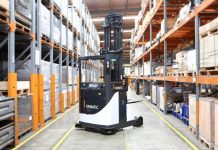Two scientists from the Massachusetts Institute of Technology (MIT) have come up with a concept design for a “personal food factory”, a food printer which would be able to “print” edible substance from specified ingredients, without any wastage at the point of cooking.

According to the feature on Phys.org, the food printer is in its concept design stage, but researchers Amit Zoran and Marcelo Coelho from the MIT’s Fluid Interfaces Group Media Lab hope their idea would “provide a glimpse at the new aesthetic and cultural possibilities, which can be brought forth by a new, digital gastronomy.”
The apparatus, which is called “Cornucopia” or Digital Fabricator, works by storing and refrigerating ingredients in food canisters. When the time comes for them to be prepared, the required ingredients are selected and then mixed in a mixing chamber. The mixture is then released layer by layer, cooked or cooled by heating or cooling tubes, and then printed unto a serving tray.
Through the food printer which uses touch-screen technology and Internet connectivity, users would be able to customize the flavours of each meal and control the quality and nutritional value of the food such as carbohydrate, fat or calorie content.
The researchers said the printing process brings cooking technologies into the digital age and allows new textures and flavours to be created, which would otherwise be difficult or even impossible using traditional cooking methods.
Food printing is not an entirely new concept. As soon as campaigns began to send ordinary people on trips to outer space, the question of packing enough food that will sustain long missions has been a primary concern.
US’ ABC News has reported in May that NASA will give a $125,000 grant to Systems and Materials Research Corporation (SMRC) to construct a prototype of a 3D food printer which will hopefully one day see pizzas being printed in space.
“[SMRC] has proposed a 3-D printed food system for long duration space missions,” NASA’s Allard Beutel told ABC News.
“The proposal was selected for contract negotiation because of its merits in addressing NASA’s advanced food system technology needs as we prepare for long duration human space exploration. In-space and additive manufacturing offers the potential for game-changing weight savings and new mission opportunities, whether ‘printing’ food, tools or entire spacecraft.”
Anjan Contractor, an engineer with SMRC told Quartz that long-distance space travel requires 15-plus years of shelf life.
“The way we are working on it is, all the carbs, proteins and macro and micro nutrients are in powder form. We take moisture out, and in that form it will last maybe 30 years.”

















